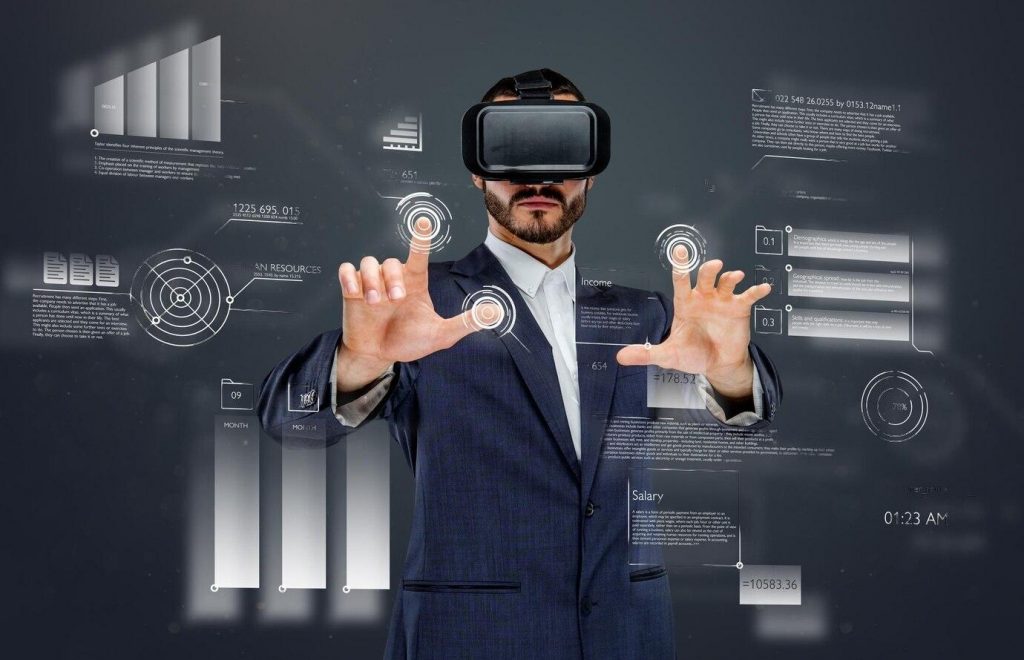Introduction
Virtual reality allows organizations to create realistic work environments within a simulated setting. In recent years, advancements in technology have paved the way for innovative approaches to safety training and education. One such technology with immense potential is virtual reality (VR). This comprehensive guide aims to explore how Virtual Reality can revolutionize workplace safety by creating immersive simulations, providing effective training, and addressing psychological factors that impact safety performance.

The Benefits of Virtual Reality in Workplace Safety
Immersive Simulations for Hazard Recognition
By replicating the actual workspace, employees can familiarize themselves with potential hazards and learn to identify them accurately. The immersive nature of VR enables employees to experience various scenarios, such as navigating a construction site or handling hazardous materials, in a safe and controlled environment.
Training employees to recognize potential hazards is a crucial step in preventing accidents and promoting a culture of safety. VR simulations enable interactive learning experiences, where employees can actively engage with their surroundings and practice hazard recognition. Through repetitive exposure to simulated hazards, employees develop heightened situational awareness, enhancing their ability to identify and mitigate risks in real-life work settings.
Effective Safety Training and Education
Traditional safety training methods often rely on lectures or static instructional materials, which can be passive and less engaging. Virtual reality, on the other hand, offers a dynamic and interactive learning experience. Employees can actively participate in hands-on training reinforced by realistic simulations and interactive elements.
One of the significant advantages of VR training is its ability to simulate emergency response scenarios. By placing employees in virtual emergency situations, they can practice responding to crises such as fires, chemical spills, or medical emergencies. This allows for valuable experience without the potential dangers associated with real-life emergencies. In turn, employees gain confidence, become more competent in their roles, and contribute to a safer work environment.
Psychological Impact on Safety Performance
In addition to its practical applications, virtual reality also has a positive psychological impact on safety performance. Engaging employees through immersive and interactive experiences enhances their motivation and enthusiasm for safety protocols. By incorporating gamification elements, such as scoring systems and rewards, VR training becomes more enjoyable and encourages active participation.
Moreover, VR training can reduce anxiety and fear in high-risk environments. Employees who engage in VR simulations that replicate challenging scenarios, such as working at heights or handling dangerous machinery, can gradually acclimatize to the associated risks. This exposure therapy helps build resilience and confidence, enabling employees to perform their tasks safely and effectively.
Implementing VR for Workplace Safety
Assessing Organizational Safety Needs
To effectively implement VR for workplace safety, organizations need to assess their safety needs. This involves identifying high-risk areas and tasks within the organization, as well as analyzing any existing gaps in safety training. By understanding specific safety challenges, organizations can tailor virtual reality experiences to address these areas effectively.
Defining clear objectives and metrics is crucial for evaluating the success of VR-based safety programs. Objectives could include reducing the number of workplace accidents, improving safety compliance, or enhancing employee safety knowledge and skills. Metrics should align with these objectives and provide measurable insights into the impact of VR training on overall safety performance.
Choosing the Right VR Hardware and Software
Selecting suitable VR hardware and software is essential for a successful implementation of VR-based safety programs. Organizations must evaluate VR equipment and ensure compatibility with their existing infrastructure. Factors such as ease of use, comfort, and durability should be considered to maximize user satisfaction and minimize technical difficulties.
Additionally, organizations should seek user-friendly VR platforms that support customization and integration with existing training programs. This allows for a seamless transition and ensures that VR training complements other safety initiatives within the organization.
Designing Engaging VR Safety Experiences
Designing compelling VR safety experiences is key to capturing employees’ attention and facilitating effective learning. Customizing VR simulations to specific workplace scenarios enables employees to relate their training to their day-to-day tasks. By incorporating interactive elements, such as object manipulation or decision-making, employees remain actively engaged throughout the training process.
Providing real-time feedback and progress tracking is crucial for employees to gauge their performance and identify areas for improvement. VR training platforms should offer instant feedback on safety actions and provide insights into individual and group performance. This feedback loop allows for continuous learning and improvement, bolstering overall safety culture within the organization.
Overcoming Challenges in VR Implementation
Implementing virtual reality for workplace safety is not without its challenges. However, with careful consideration and planning, these challenges can be addressed successfully.
Addressing Cost and Resource Constraints
One of the main challenges organizations face in adopting VR for safety training is the cost associated with hardware and software. Calculating the return on investment (ROI) for VR adoption is essential to justify the expenditure. By quantifying the potential reduction in accidents, insurance premiums, and overall safety improvements, organizations can make informed decisions regarding VR implementation.
To overcome cost constraints, organizations can explore affordable VR solutions that meet their specific safety requirements. This could involve partnering with VR development companies or using off-the-shelf VR technology. Collaboration with development partners ensures access to expertise while reducing the burden on internal resources.
Ensuring User Acceptance and Adoption
Introducing new technology can be met with resistance and apprehension from employees. To ensure a smooth adoption of VR technology, organizations should provide comprehensive training and familiarization opportunities. Employees should be educated about the benefits and value of VR in workplace safety, alleviating any concerns or doubts they may have.
Furthermore, organizations can encourage continuous feedback and improvement by creating channels for employees to voice their experiences and suggestions. This feedback loop facilitates iterative improvements and ensures that VR-based safety programs meet the evolving needs of the workforce.
Ethical Considerations and Privacy Concerns
Implementing VR for workplace safety also raises ethical considerations and privacy concerns. Organizations must safeguard employee data and confidentiality to maintain trust and compliance with data protection regulations. Establishing clear VR usage policies and obtaining informed consent from employees regarding data collection and usage is essential.
A delicate balance between VR immersion and real-life safety practices must be struck. While VR experiences aim to replicate real-life scenarios, it is crucial to reinforce the importance of following established safety protocols in actual work environments. VR should complement existing safety measures rather than replace them entirely.
Summary
Virtual reality technology has the potential to revolutionize workplace safety by creating immersive hazard recognition simulations, providing effective training and education, and addressing psychological factors that impact safety performance. Through VR, employees can develop heightened situational awareness, acclimatize to high-risk environments, and build resilience. Implementing VR for workplace safety involves assessing organizational needs, choosing suitable hardware and software, and designing engaging VR experiences. Challenges such as cost constraints, user acceptance, and ethical considerations can be overcome through careful planning, education, and collaboration. By embracing VR, organizations can create safer work environments, improve safety performance, and enhance employee well-being.


